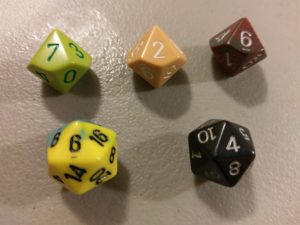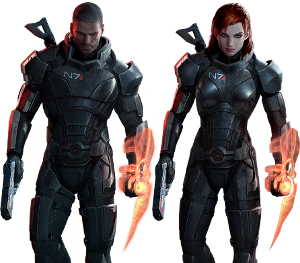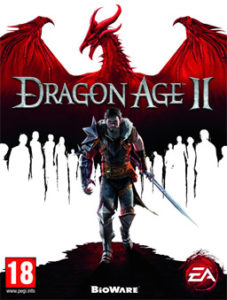If you’ve played video games at all since 2007, you’ve likely encountered a storytelling innovation introduced by the original Bioshock (note: I don’t know for certain that they are the ones that introduced this technique, but it was the first time I encountered it and the first time I saw it widely discussed).
Bioshock is set in the ruined underwater city of Rapture, once a paradise of pure, unregulated innovation. While it appears abandoned as your character approaches in his submersible, it is anything but. The inhabitants have all gone violently insane, the end result of too much tampering with their own genomes. Your character has been summoned by a mysterious note, and you arrive knowing nothing about the city or its history. But explore around a little, and you’ll find something that binds all the residents of Rapture together beyond their damaged minds. They all just loved recording audio diaries and leaving them lying around where anyone (read: you) can find and listen.
This is cleverly done for a few reasons. First is that Rapture has quite a fascinating and convoluted history from its idealistic founding to its inevitable decline. But there’s *almost* no one left who can tell you straight up what happened, and you might not trust them if they did. By scattering critical bits of information in areas where the player must pass to progress, the player is gradually filled in on the backstory in a drip-feed of exposition and character revelation. Plus, for those who absolutely must find all of Rapture’s dark little secrets, there are plenty of nonessential audio diaries to find if you poke into every nook and cranny the city has to offer.
To say this storytelling innovation was popular among game developers would be a massive understatement. Scarcely any game with meaningful effort put into story doesn’t have them these days. But while playing the recent downloadable content expansion for Horizon: Zero Dawn, navigating the ruins of past human civilization (the game is set in a post-apocalyptic far future), I encountered a little short story in audio log form. Over the course of several logs you discover while exploring the derelict dam, this story concerned two coworkers who became friends in the face of the layoff of all their peers and their replacement by robots (the rise of automation and robotics in humanity’s distant past is a major theme of the game, but seldom is it expressed so succinctly and so effectively as in this sequence of short audio logs). As the logs progress, the two friends are forced to train the robots that will eventually replace them. They form a (terrible) two-woman band, recording songs while pranking their robotic coworkers, all the while knowing they are working on borrowed time. With impressive poignancy, their last days on the job wind down, and after one last night on the town, they both go their separate ways into an uncertain (only the player knows how uncertain) future.
There are several lessons for the writer wrapped up in this. What can I say? I apparently love lists.
- Stripped-down, short side stories nested within larger stories can be effective ways at distilling the theme you are trying to convey.
- Sweat the details. The details matter. Look how much effort the writers put into this game. All this takes place in a downloadable expansion (read: optional) side-quest (also optional) in which the player can (optionally) hunt down and listen to these audio logs. And guess what? Horizon: Zero Dawn is a phenomenal game top to bottom. As my favorite football coach likes to say: “Take care of the little things and the big things take care of themselves.”
- And, in keeping with the month’s theme, think outside the box when crafting your stories.
About the Author: Gregory D. Little
Rocket scientist by day, fantasy and science fiction author by night, Gregory D. Little began his writing career in high school when he and his friend wrote Star Wars fanfic before it was cool, passing a notebook around between (all right, during) classes. His novels Unwilling Souls and Ungrateful God are available now from ebook retailers and trade paperback through Amazon.com. His short fiction can be found in The Colored Lens, A Game of Horns: A Red Unicorn Anthology, Dragon Writers: An Anthology, and the upcoming Undercurrents: An Anthology of What Lies Beneath. He lives with his wife and their yellow lab.
You can reach him at his website (www.gregorydlittle.com), his Twitter handle (@litgreg) or at his Author Page on Facebook.





